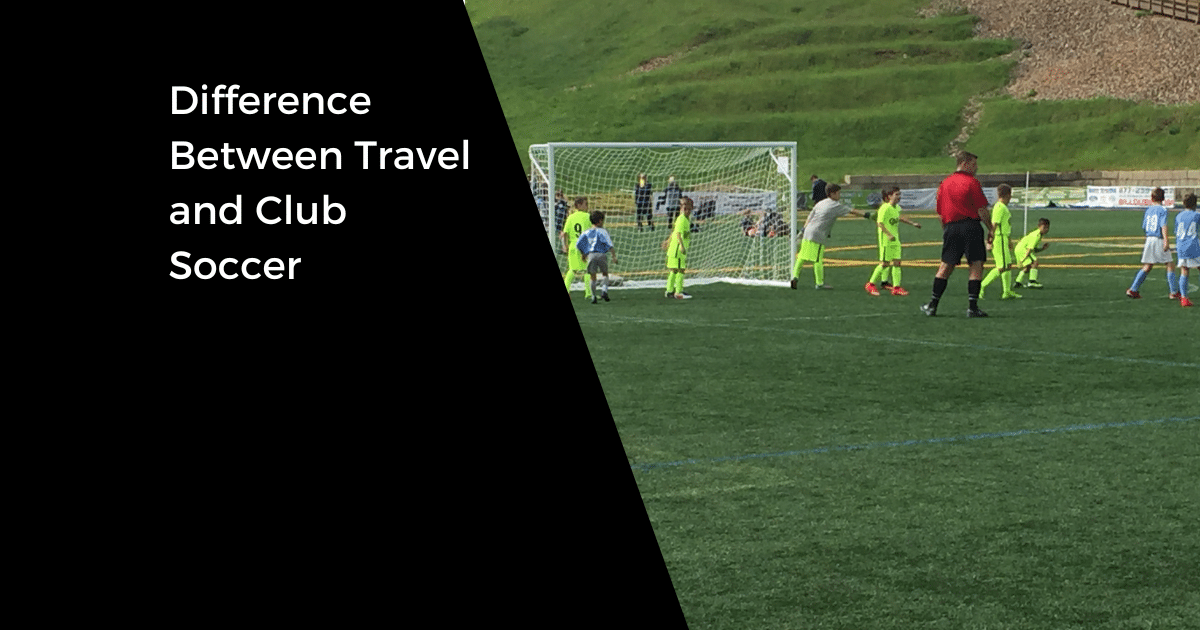Help Me! Difference Between Travel and Club Soccer

Back in my playing days, travel soccer was more popular than club. There were only a couple of clubs in our state. Now, there are many and it has become wildly popular!
While both types of soccer involve a higher level of competition than recreational, there are some key differences between the two.
Club soccer is more regional than local. Many club soccer games are within a two-hour drive. On the flip side, travel soccer games usually require a 30-minute drive or less.
The other factors that make a difference are:
- Cost
- Time Commitment
- Competition
- Development
- Opportunities
It’s important to understand the differences between club and travel soccer before your child commits to one.
In this article, I’ll address both.
What is the Difference Between Travel and Club Soccer?

While both types of soccer provide a competitive environment, club soccer is a few rungs up. Travel soccer can be a great way to get into club soccer. Club soccer can further your opportunities in the future.
1. Time Commitment: Club soccer requires a greater time commitment than travel soccer.
In club soccer, three-hour drives and plane rides become the norm. Families may need to attend showcases that last four days. This is in addition to three or four practices per week.
Travel soccer may require players to practice a couple of times a week and play a game on a Saturday or Sunday.
2. Cost: Club soccer can be upwards of 1000x more than travel soccer.
Club soccer in the United States can be upwards of $3,500 or more. That excludes all the travel and uniforms! As far as cost, it’s right up there with hockey.
Travel soccer is a lot less expensive. It may cost $100-$300 to play. You also won’t have as many hotel and airfare expenses.
3. Level of Competition: Club soccer is much better competition.
Club soccer teams will play high-level competition throughout their league and region. Depending on the league, it may be the highest level of competition in U.S. youth soccer.
Travel soccer is a more relaxed atmosphere. You will be playing against other town teams. It’s a higher level than rec but tends to be much lower than club.
4. Player Development: Players will succeed faster with club soccer.
Club soccer coaches are usually experienced and paid. This is their career. For this reason, the better they develop players, the more success they will have.
Travel soccer coaches tend to be the Dad or Mom of one of the players on the team. They are not paid and may have little to no coaching experience.
What’s the Right Choice For You?

It depends.
If your child dominates rec soccer from an early age, you may want to try travel soccer for a year. This would give you a good gauge of whether club soccer may be the next logical step.
If your child is in the middle of the pack in his town, he may want to stick to travel soccer for a couple of years. Building the skills is critical to playing at a higher level.
Here was my son’s path:
- Age 5 & 6: Rec
- Age 7: Town & Club Soccer
- Age 8-14: Club Soccer
Ultimately this decision should be a family one. You should consider the time commitment and cost involved.
You should also make sure your child is mentally ready. Club soccer can create an environment of pressure. Speaking from experience, most of it is unnecessary.
If you’d like help in navigating it all, please reach out to me!

Written By: SoccerNovo
SoccerNovo is an independent youth soccer media brand built to help parents, players, and coaches better understand the game and the pathways available in U.S. soccer. Our mission is to make youth soccer simpler, clearer, and more accessible for everyone involved in it.
Let’s connect




